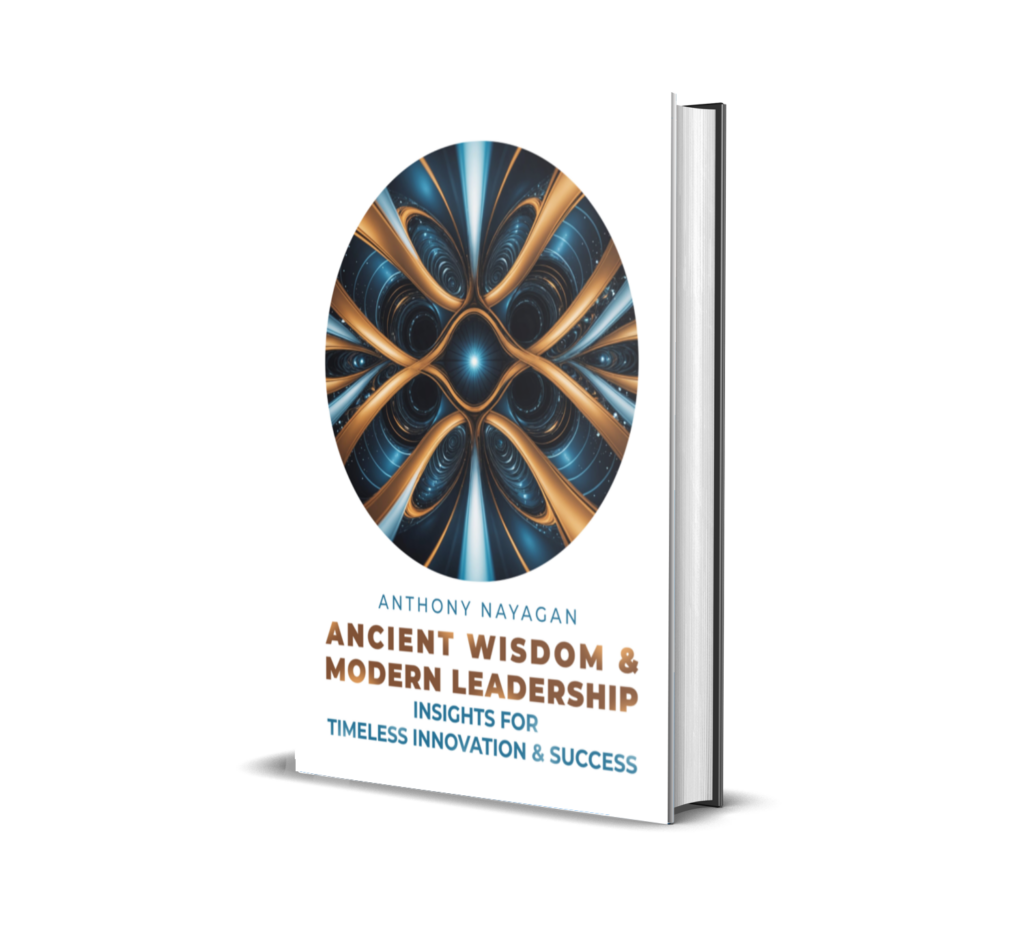Unlocking the Secrets of Materialism
How Quantum Physics Can Elevate Leadership and Visionary Thinking
Materialism in Philosophical and Historical Context
Many of us, when we hear the word “materialism,” instantly think of something negative — perhaps images of greed, consumerism, and a world overly concerned with wealth and possessions come to mind. It feels like materialism is often equated with a hollow pursuit of more stuff, where satisfaction is fleeting and life seems devoid of deeper meaning. But what if I told you that materialism, as a philosophical concept, holds far more profound and ancient roots? This term, often misunderstood, has shaped centuries of intellectual discourse and philosophical inquiry. It isn’t simply about “having more” — it’s about understanding the very essence of what we are made of and how the universe around us functions.
The Depths of Philosophical Materialism
In the realm of philosophy, materialism transcends our modern-day interpretations of the word. Its philosophical foundations stretch back centuries, forming one of the cornerstones of how we attempt to explain our existence. The core of materialism lies in two fundamental assertions:
- Physical Matter is Fundamental: The belief that everything in nature is composed of physical matter. All mental states, all consciousness, are believed to arise from the interactions of different types of matter. Our thoughts, our memories, our very consciousness — it’s all explained as by-products of material processes.
- Denial of Entities Beyond the Material Universe: This tenet states that there are no entities or forces that exist beyond the material world. In this worldview, things like souls, spirits, or divine beings do not have any independent existence outside the physical universe.
This outlook, though often seen as limiting, shaped many intellectual schools and traditions. Materialism became more than a scientific approach to understanding the universe. It influenced art, ethics, and even how societies approached governance. In a way, it tells us that everything we observe, believe, and know about the world is interconnected, much like the atoms that bind the material world together.
The Rise of Materialism in Classical Physics
The age of classical physics witnessed materialism take center stage. Sir Isaac Newton, whose laws of motion and universal gravitation transformed our understanding of the physical universe, did so within a materialist framework. His theories gave rise to a universe that was clockwork-like, running with precision, where matter and force interacted in predictable, measurable ways.
Newtonian physics gave the impression of a mechanistic world — one where the universe was composed of objects in motion, governed by laws of nature. It was all very logical, very structured, and very material. At the heart of it was the belief that the material world was all there was. The elegance of this philosophy appealed to many thinkers at the time, who wanted to explain the world without recourse to mystical or supernatural ideas.
Beyond the Boundaries of Materialism: Modern Physics Steps In
Fast forward to the 20th century, and the scientific world began to question the rigidity of classical materialism. The discoveries in modern physics — especially in the field of quantum mechanics — started to challenge the boundaries of matter as we knew it.
In the quantum realm, things were no longer simple, predictable, or even material in the traditional sense. Instead of particles acting like tiny billiard balls bouncing around in space, physicists uncovered something more mind-bending. The most fundamental building blocks of matter weren’t solid objects at all. They were continuous, fluid-like fields — what we now refer to as quantum fields.
It is here, at the intersection of physics and philosophy, that materialism faced one of its greatest challenges. The solidity that materialism once promised dissolved into a complex web of probabilities, wave functions, and energies that operate in ways that seemed more mystical than material.
Challenges to Traditional Materialist Perspectives in Quantum Mechanics
One of the most startling revelations in quantum physics was the wave-particle duality. This concept defied the traditional materialist understanding that particles should behave like tiny bits of matter. Instead, quantum physics showed that particles, like electrons or photons, also exhibit wave-like properties. They do not simply exist as singular, fixed entities — they fluctuate, morph, and interact in mysterious ways that confound our materialist expectations.
Furthermore, the universe, as quantum mechanics revealed, is not just a collection of isolated bits of matter. It’s more like a continuous sea of energy, with quantum fields weaving together the fundamental forces and particles. These fields control how particles interact and, intriguingly, suggest that the universe itself may be imbued with a form of innate intelligence — something materialism, in its traditional sense, struggled to accommodate.
This energy, which interacts with matter in ways we are only beginning to understand, brings us to a crossroads. Quantum physics has revealed a universe far more interconnected, more alive, and more mysterious than classical materialism could ever have predicted.
The Limits of Materialism in Understanding Consciousness and Reality
As we continue to peel back the layers of reality through science, we begin to see that the materialist perspective may only offer half of the picture. If we perceive our lives strictly through the lens of materialism — through structure, order, and the relativity between objects and experiences — we risk missing the other half of the story. The energy, the consciousness, the wisdom that underpins everything.
Quantum mechanics compels us to rethink what we know about the universe and ourselves. It suggests that our consciousness, once thought to be merely an epiphenomenon of matter, may be more fundamental. The boundary between the material and the immaterial blurs, and we are left wondering: what else exists that we cannot yet see or measure?
A New Paradigm: Integrating Matter, Energy, and Consciousness
Materialism, in its classical form, may no longer be enough to explain the world we live in. Our reality is more complex, more fluid, and more interconnected than the rigid frameworks of the past could have anticipated. Energy and consciousness play a role in shaping our universe, forcing us to embrace a more holistic understanding of existence.
If we look beyond the material world and acknowledge the importance of energy, consciousness, and wisdom, we open ourselves up to a new way of seeing reality. We begin to realize that life is not just about structure and order — it’s about the unseen forces that shape our experiences, the connections between all living things, and the deeper wisdom that guides us.
As we embrace this broader understanding, we can move beyond the ordinary and enter the extraordinary. We can learn to live in harmony with both the material and immaterial worlds, tapping into the wisdom that surrounds us. And in doing so, we might just unlock new levels of human potential and creativity.
Conclusion: Materialism Revisited
Materialism, as a philosophy, has provided the foundation for much of modern science and thought. But as we advance in our understanding of the universe, it becomes clear that materialism alone cannot explain the full richness of our existence. Quantum mechanics, with its challenges to the materialist worldview, reminds us that there is more to life than just physical matter.
We are beings of energy, consciousness, and wisdom. And as we continue to explore the mysteries of the universe, we must remain open to the idea that materialism, while important, is not the end of the story — it’s just the beginning.
FAQs
- Is materialism still relevant today? Yes, but it has evolved. While classical materialism laid the groundwork for much of modern science, newer discoveries in quantum mechanics challenge its limitations, showing that energy and consciousness are just as important.
- What does quantum mechanics say about materialism? Quantum mechanics complicates the materialist view by showing that particles behave like waves, and energy plays a crucial role in shaping matter, suggesting that materialism doesn’t fully explain the universe.
- Does materialism deny the existence of a soul? Traditional materialism does, as it claims that nothing exists beyond the physical universe. However, modern interpretations are beginning to acknowledge the possibility of consciousness existing beyond material matter.
- How does quantum physics affect our understanding of reality? Quantum physics reveals a reality far more interconnected and mysterious than classical physics suggested, compelling us to rethink materialist notions of a purely physical universe.
- Can energy and consciousness coexist with materialism? Yes, but it requires an expanded view of materialism — one that embraces energy and consciousness as fundamental components of reality alongside physical matter.
A Journey Toward Timeless Innovation
This blog is one in a series of articles that will explore how we can overcome the inevitability of decline to create and innovate in ways that withstand the test of time. How can leaders and innovators draw on ancient wisdom to guide their modern strategies? What practices can ensure that what they build today remains relevant and impactful for generations to come?
If these questions intrigue you, I invite you to visit Supreme Realizationand download a prerelease copy of Anthony Nayagan’s “ANCIENT WISDOM & MODERN LEADERSHIP: Insights for Timeless Innovation & Success.”


